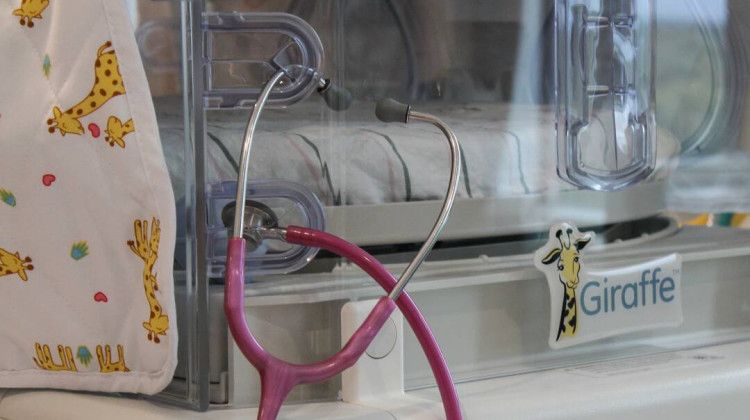INDIANAPOLIS -- The infant mortality rate in Indiana is one of the worst in the United States, at 7.1 percent. That means on average a Hoosier infant dies every 13 hours. Comparatively, the national rate is 5.96 percent.
That measurement is determined by the number of babies who die in their first year of life per 1,000 births. The leading causes include perinatal risk, congenital malformation and SIDS – sudden infant death syndrome.
Maura and Sam Hanke lost their child Charlie to SIDS one night after he fell asleep on top of his father.
“Tired, he laid on the couch with Charlie, the perfect picture of sleep-deprived father and son,” Maura Hanke said. “We so often see this photo on Facebook: baby asleep on dad’s chest. Sam woke up. Charlie didn’t.”
SIDS cannot be outright prevented, but there are ways to lower a child’s risk, such as ensuring a baby sleeps on its back. Since losing Charlie, the Hanke family has dedicated its time and resources to spreading information about safe sleep practices, including at a recent Indiana Child Fatality Review conference in Indianapolis.
Childcare professionals from across the state came together to share information and explore potential solutions for the biggest risks to Hoosier children, including the infant mortality rate.
In 2011, 654 infants died in Indiana. It was highlighted at the conference by hundreds of multicolored socks hung from three tightly packed metal stands.
“There’s 600 socks up there that represents the 600 infants that died in Indiana,” said Teri Covington, the executive director for the National Center for the Review and Prevention of Child Deaths. “We want to start tearing those socks down next year and your work is really going to get us there.”
Deputy Health Commissioner Jennifer Walthall said reducing that number is the top priority for the State Department of Health. As part of that campaign, it’s targeting preventable risks such as SIDS and early elective deliveries.
“We would like for as many kids as possible for go for full term so to 39 weeks or more,” Walthall said. “So, there now is a rule in Indiana that we don’t reimburse for elective deliveries in Medicaid that occur before 39 weeks.”
The state launched an outreach initiative in January called Labor of Love, an ad campaign and online educational resource for parents. Lawmakers allocated $2.5 million for its website and upcoming smartphone app.
The Indiana General Assembly funneled an additional $11 million to the newly-created Safety PIN program, which stands for “Protecting Indiana’s Newborns.” It will provide dollars for local pilot projects that are successfully reducing infant mortality. Walthall said the ultimate goal is to expand those programs statewide.
“What we’re looking for is pilot projects that are relevant to communities that can demonstrate outcomes that are important for that community that can then be applied and enhanced in other locations as well,” Walthall said.
One example Walthall cites is the Marion County Nurse Family Partnership. The nonprofit program connects first-time mothers who are eligible for Medicaid with registered nurses.
Marilyn Berry-Stamm is one of those nurses with the partnership. She makes house visits to 23 clients in Marion County, checking in on the health of the baby and the family.
“In today’s culture, many families don’t have extended family around and this may be the first time they’ve been around a newborn,” Stamm said.
Part of her duties include health monitoring, teaching parents how to provide for the newborn and sharing educational material.
The Nurse Family Partnership also works with Goodwill Services to connect families with economic and education resources. It serves 600 families in the area with plans to expand to the eastern and northern portions of the state for a total of 1,400 families.
Betsy Delgato, vice president of mission advancement for Goodwill Industries of Indiana, said the Nurse Family Partnership may apply for the new Safety PIN funds to assist in its expansion.
The State Department of Health is currently developing those applications, intending to accept proposals this fall.
Correction: An earlier version of this story incorrectly stated that mothers on Medicaid qualified for the Nurse Family Partnership program. Mothers need only to be eligible for Medicaid to qualify for the Nurse Family Partnership program.
 DONATE
DONATE







 Support WFYI. We can't do it without you.
Support WFYI. We can't do it without you.